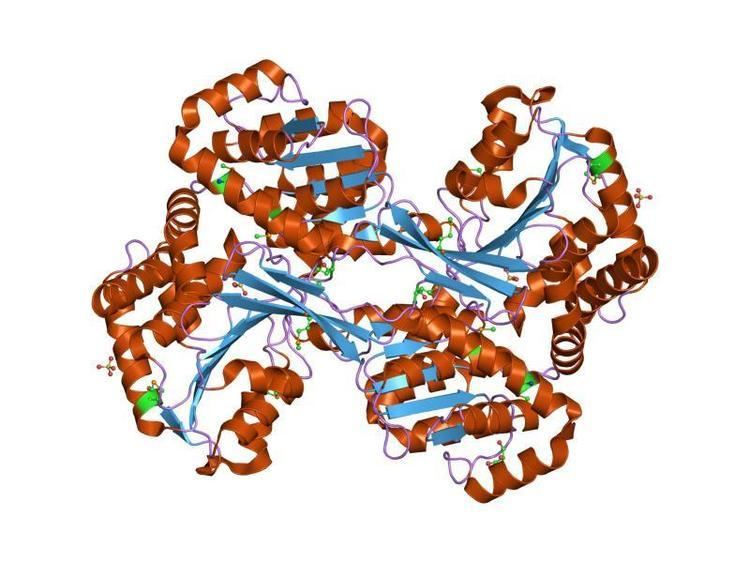EC number 1.1.1.23 ExPASy NiceZyme view | CAS number 9028-27-7 | |
 | ||
In enzymology, a histidinol dehydrogenase (HIS4) (HDH) (EC 1.1.1.23) is an enzyme that catalyzes the chemical reaction
Contents
L-histidinol + 2 NAD+Thus, the two substrates of this enzyme are L-histidinol and NAD+, whereas its 3 products are L-histidine, NADH, and H+.
This enzyme belongs to the family of oxidoreductases, specifically those acting on the CH-OH group of donor with NAD+ or NADP+ as acceptor. The systematic name of this enzyme class is L-histidinol:NAD+ oxidoreductase. This enzyme is also called L-histidinol dehydrogenase.
Histidinol dehydrogenase catalyzes the terminal step in the biosynthesis of histidine in bacteria, fungi, and plants, the four-electron oxidation of L-histidinol to histidine.
In 4-electron dehydrogenases, a single active site catalyses 2 separate oxidation steps: oxidation of the substrate alcohol to an intermediate aldehyde; and oxidation of the aldehyde to the product acid, in this case His. The reaction proceeds via a tightly- or covalently-bound inter-mediate, and requires the presence of 2 NAD molecules. By contrast with most dehydrogenases, the substrate is bound before the NAD coenzyme. A Cys residue has been implicated in the catalytic mechanism of the second oxidative step.
In bacteria HDH is a single chain polypeptide; in fungi it is the C-terminal domain of a multifunctional enzyme which catalyses three different steps of histidine biosynthesis; and in plants it is expressed as a nuclear encoded protein precursor which is exported to the chloroplast.
Co-regulation of the gene
Histodinol dehydrogenase gene (HIS4) has been shown co-regulating the adjacent gene while it is under amino acids selective pressure.
Structural studies
As of late 2007, 4 structures have been solved for this class of enzymes, with PDB accession codes 1K75, 1KAE, 1KAH, and 1KAR.
